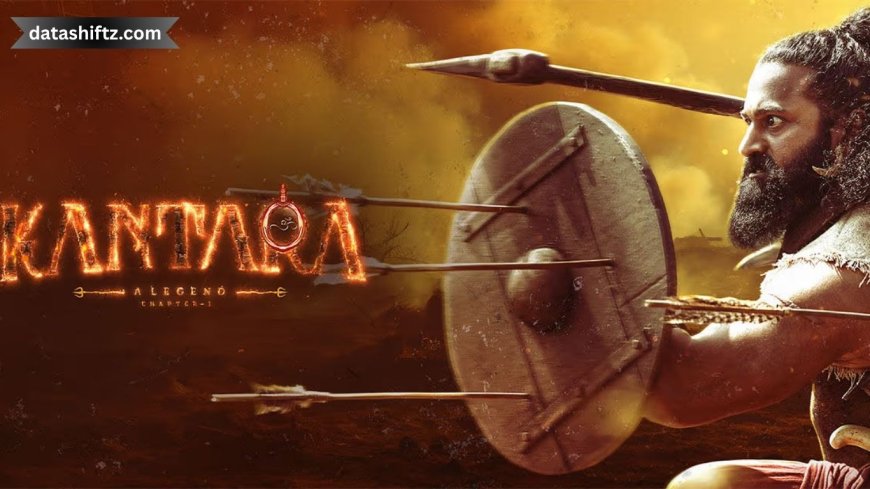Kantara Chapter 1 Review: A Spellbinding Folklore Spectacle with Flaws

Introduction & Expectations
Ever since Kantara (2022) captivated audiences with its earthy mysticism and tribal lore, anticipation for the prequel, Kantara: Chapter 1, reached fever pitch. When the film finally hit the screens on 2 October 2025, it opened to thunderous applause and widespread curiosity. With Rishab Shetty at the helm as writer‑director and lead actor, expectations were high — will this chapter match the original’s raw power, or will the ambition overshadow cohesion?
In this review, I’ll unpack what works — and what doesn’t — in Kantara Chapter 1, and explore whether it elevates the franchise or dilutes its essence.
What Works — Strengths & Highlights
1. Visual Grandeur & Ambitious Scale
From the opening frames, the film immerses you in a rich, textured world. The art direction, costume design, and cinematography combine to create a believable tribal realm and palace kingdoms alike. The forest feels alive, and moments set in nature are among the most arresting.
In many reviews, critics have hailed the film as a visual spectacle — a feast for the eyes that demands to be seen on the big screen.
2. Rishab Shetty’s Committed Performance
Shetty’s portrayal of Berme (or “Burme” in some sources) anchors the film. In the sequences where spiritual possession and divine energy take over, he becomes something beyond human — raw, magnetic, and deeply affecting.
His ability to carry heavy sequences with minimal dialogues, letting expression and body language speak, is one of the film’s strongest assets.
3. Powerful Climax & Mythic Moments
If there is a moment when Chapter 1 truly takes off, it’s the last 30–40 minutes. The tension, the divine “Guliga” moments, and the mystical intensity elevate the film into the realm of unforgettable. Many reviewers cite the climax as its crowning glory.
These segments reclaim the spiritual power that made Kantara (2022) such a phenomenon, with a renewed ambition.
4. Solid Supporting Cast & World Expansion
While Shetty carries the weight, Rukmini Vasanth as Kanakavathi lends emotional depth and balance. Her character, though not perfect, has stronger arcs than many female counterparts in such epics.
Gulshan Devaiah, in the role of the rival king Kulashekara, becomes a compelling antagonist — slippery, powerful, and morally corrupt.
Other supporting actors add texture to the world, even if some are underwritten.
What Falters — Weaknesses & Criticisms
Despite its strengths, Kantara Chapter 1 is not without significant drawbacks. Some of these prevent it from fully living up to its promise.
1. Uneven Screenplay & Narrative Bloat
One of the most consistent criticisms is the film’s pacing and structure. The first half is often described as draggy, padded with scenes that don’t add much to the core conflict.
The film’s runtime (~168 minutes) exacerbates the issue — many sequences linger too long, and tonal shifts (from mythic to political to romance) feel inconsistent.
2. Weak or Forced Scenes & Comic Relief Missteps
Certain comic sequences are seen as jarring intrusions in an otherwise serious tone. Some romantic scenes and dialogues are flat and don’t land.
Additionally, there are moments where the visuals and music overpower the dialogues, making crucial lines hard to grasp.
3. Emotional Disconnect & Overabundance of Elements
A recurring complaint is that despite its mythic ambition, many characters remain underdeveloped, and the stakes don’t always feel personal.
Because the film tries to balance tribal lore, palace intrigue, multiple clans and subplots, the emotional throughline sometimes blurs.
4. Technical Imperfections in VFX & Editing
While the visual ambition is laudable, not every CGI effect lands. Some sequences feel overly digital or lack finesse.
Editing is another weak link: some reviewers argue that trimming 20–25 minutes would have tightened the film.
Strengths vs Weaknesses
| Aspect | Strengths / Positives | Weaknesses / Negatives |
|---|---|---|
| Visuals & Production | Grand scale, immersive world, strong art & costume design | Occasional CGI roughness, overreliance on spectacle |
| Lead Performance | Rishab Shetty’s magnetic presence, spiritual sequences | Some dialogue scenes undercut by heavy soundtrack or weak script |
| Climax & Mythic Moments | Electrifying finale, emotional punch, memorable “Guliga” bits | Earlier parts drag, losing momentum until later |
| Supporting Cast | Rukmini Vasanth adds emotional balance; antagonist impactful | Many supporting roles feel underwritten |
| Screenplay & Pace | Ambitious plot, multiple themes | Overlong, tonal shifts, padding, narrative dilution |
| Editing & Narrative Flow | — | Editing could tighten; too many threads weaken the focus |
Takeaways from Kantara Chapter 1
-
Spectacle is the film’s backbone. Even if some story beats wobble, the film refuses to let your eyes wander — you’re constantly drawn in by production value.
-
The climax redeems many flaws. If there’s one part you should not skip, it’s the last 30 minutes; that’s where the film becomes transcendent.
-
Shetty, as an actor, is stronger than as a writer. His presence elevates every scene, but narrative missteps pull the film back.
-
Too many cooks spoil the broth. Subplots, multiple tribes, palace rivalry — while each is interesting, together they dilute the core.
-
Tone balance is uneven. The film often slips oddly between spiritual, political, romantic, and comedic registers.
-
Editing should have been leaner. A tighter cut would have given more room for emotional engagement instead of overindulgence.
-
Worth a big‑screen viewing. Many critics and fans stress that Chapter 1 is best experienced in cinemas, with full sound and scale.
Conclusion
Kantara: Chapter 1 is a bold, ambitious film — and it often soars. The visual design, the mythic energy, and Rishab Shetty’s peak moments make it a cinematic event in Indian film. Yet, the story doesn’t always match the ambition; narrative slack and tonal clumsiness hold it back from true greatness.
If you view it as an extended prologue and prioritize experience over structural perfection, you will likely be moved. But if emotional cohesion and crisp storytelling matter more to you, Chapter 1 may feel frustratingly uneven. All said, it's a worthy addition to the Kantara world — flawed, beautiful, and unforgettable in parts.






























